Some body language signals of Maine Coon cats (and all domestic cats)
Body language is perhaps the most complex way that cats communicate their wide range of colourful emotions. They have a highly developed system of communication which uses most parts of their body, from ears to tail, to express what is going on in their minds. Is your cat feeling contented? Frightened? Angry? By recognising the following body signals, you'll be able to tell exactly what kind of mood your Maine Coon cat is in.
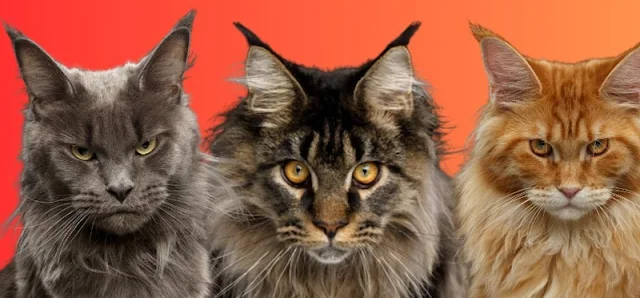 |
| Maine Coon facial expressions - anger or concern. Image: MikeB |
Contented cat
Maine Coon cats commonly use body language to express their contentment often in the way they sleep and arise from sleep. There is no better image of a creature at peace with the world than a cat snoozing away while curled tightly into a ball or stretched out upside down in the middle of your favourite armchair.
After waking up from a nap a contented cat may yawn lazily and go through a luxurious series of stretching movements. These movements will be accompanied by heavy-lidded blinking of their eyes and gentle twitching of their whiskers. The yawn really says it all. A long, slow, wide-mouthed yawn with a lot of teeth and a pink tongue is a sure sign that your cat feels safe and secure. A good chance to check the mouth if you are quick! How are the gums? Any gum disease? Here are some other ways a cat shows contentment:
- The muscles will be relaxed.
- The cat will be seated quietly with ears erect, indicating that she is alert and carefully watching what is going on.
- Soft purring.
- Washing with long, slow licks.
- Upon seeing her owner, the cat will stand with her head lowered, hindquarters raised, tail held straight up. The tail tip is bent slightly forward and moves from side to side.
- Rubbing of cheeks, whiskers and tail against her owner. This marks a scent upon the owner's body.
- The cat will wind between the owner's legs or jump onto his or her lap.
Upset cat - frightened or angry
Many situations can frighten or annoy a cat. Your Maine Coon may become upset if she suddenly is placed in strange or unfamiliar surroundings, or if a strange cat or human approaches her. In such situations, a cat will either sprint or hide until she feels more secure, or she may show how upset she is by demonstrating the following signals:
- Body muscles will tense.
- The cat will remain in a fixed position while she assesses the situation.
- Her eyes will remain fixed on the stranger.
- If the cat is very anxious or afraid, the pupils of the eyes will dilate. The eyes will dart rapidly from side to side, looking for a way out. The cat may assume a submissive posture, crouching down with the ears flattened sideways across the head. The tail will be held low and the chin will be drawn in. She may roll on her back with a paw raised for self-defence or she may try to make a dash for safety.
- Each hair on the cat's tail will become extended until the tail looks like a bottlebrush.
Defensive cat
If the movements outlined above fail to defuse a disturbing situation, your cat's next reaction will be to stand her ground. She will continue to communicate the body signs described above, with more menacing additions. These are as follows:
- The defensive cat will growl, hiss, or spit.
- She will arch her back.
- The fur along her back will bristle.
- The cat will display her fangs with her mouth wide open.
- She will adopt a sideway stance and try to appear larger and more menacing.
- The tail will be arched and bristling.
- The ears will be flattened.
- The whiskers will be bristling.
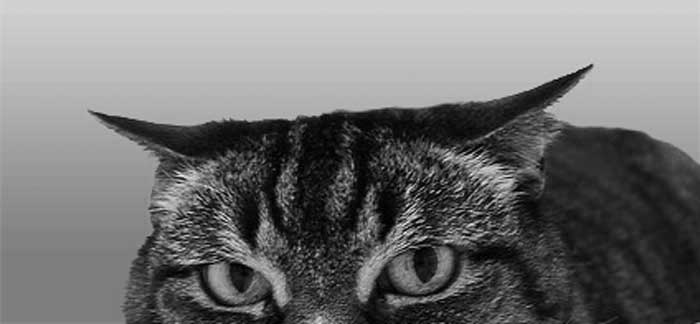 |
| Image: MikeB |
Attacking cat
In an extreme situation, a frightened cat may prepare herself to attack. She would exhibit the following body signals:
- The tail will be low and close to the ground, bristling and swishing.
- The cat will crouch low.
- The ears will be picked and furled back.
- The pupils will be reduced to slits helping her to focus on her target.
- The whiskers will bristle forward in order to sense all potential danger.
- The claws will be extended.
- The mouth will open wide with lips curled and fangs barred.
- Snarls, hissing and spitting will continue. The cat is ready to launch an attack by leaping at her adversely.
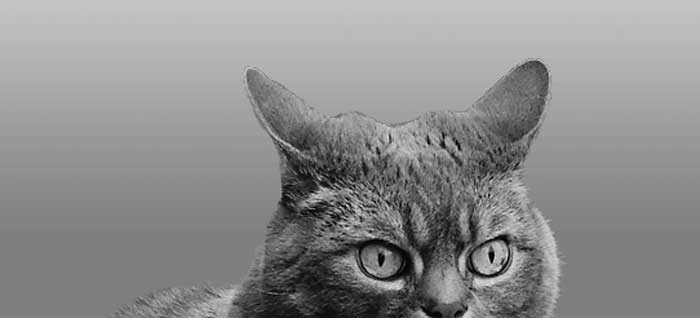 |
| Image: MikeB |
The cat who is ill
A cat who is not feeling well will usually not eat, will fail to wash herself, and may display the following body signals:
- Her tail will be kept low.
- She has a hunched-over appearance.
- She will have a miserable facial expression. The eyes may be dull, the appearance of the face not bright, but depressed.
Desirous cat
When your cat wants something from you, she will certainly let you know about it. If, for example, you walk into the kitchen and your cat bounds after you, persistently dipping and rubbing against your leg and trying to get your full attention, your pet is telling you that it is time to eat. Other body signals that indicate desire include the following:
- Your cat will continue to gaze at you while meowing.
- She will perform a full body stretch and then she might touch you with her paw. She will repeat this motion until she gets your attention.
Keep in mind that while cats do not mind staring at you until they get what they want, they do not like being stared at. In fact, should your cat catch you observing her in some activity, she will either stop what she is doing altogether or continue any more hesitant, self-conscious manner. A lot of cats don't like being photographed for this reason I'd suggest. The camera lens becomes the eye.
Facial expressions
Making faces is another way in which cats communicate their feelings. The shape of a cat's eyes and the motions of the ears and whiskers are rich in meaning. You might want to become familiar with some facial characteristics.
Contented cat
- Perky ears.
- Pupils bright and normal for prevailing light.
- Relaxed whiskers.
Angry
- Ears are erect but furled back. This change in ear position is one of a number of body changes that signal to another individual that the cat is in an offensive stance
- Pupils constrict to slits.
- Whiskers bristle forward.
Frightened cat
- Ears are flattened.
- Eyes are wide open.
- Whiskers are flattened.
Playing or hunting cat
- Pupils are open.
- Ears are pricked and trust forward.
- Whiskers are thrust forward in order to sense all possible stimuli.


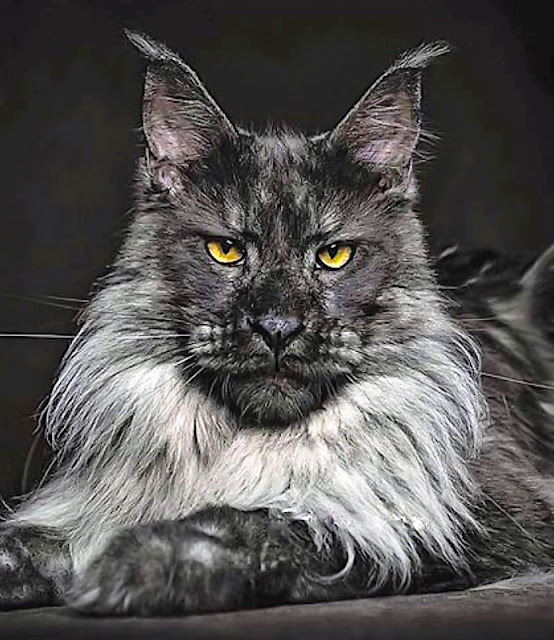


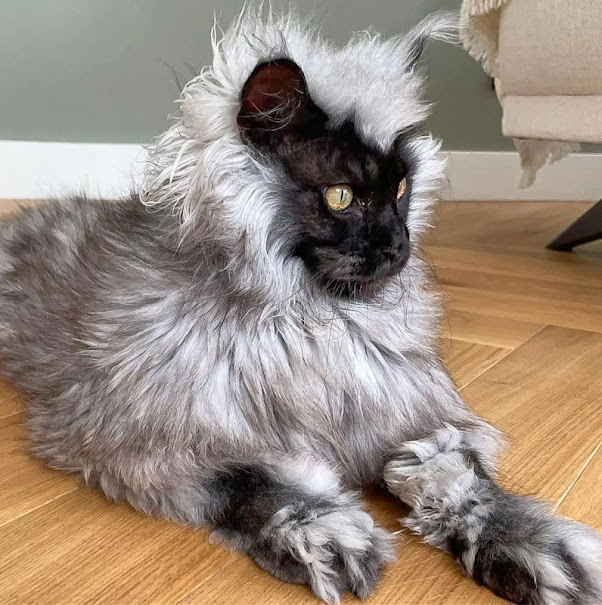

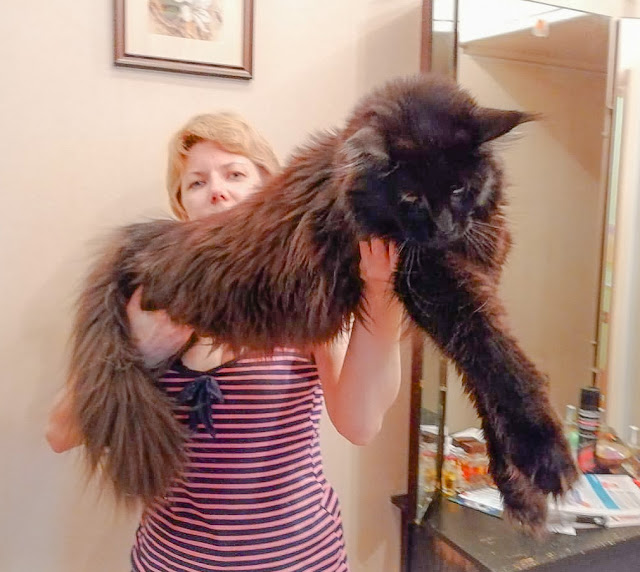

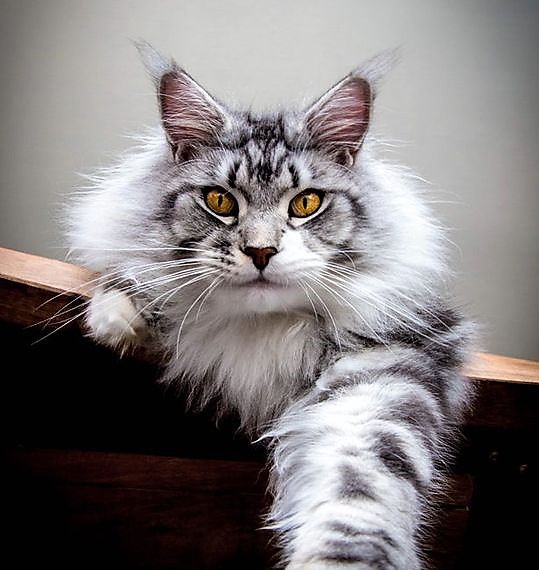
Comments
Post a Comment
Please share your Maine Coon experiences.